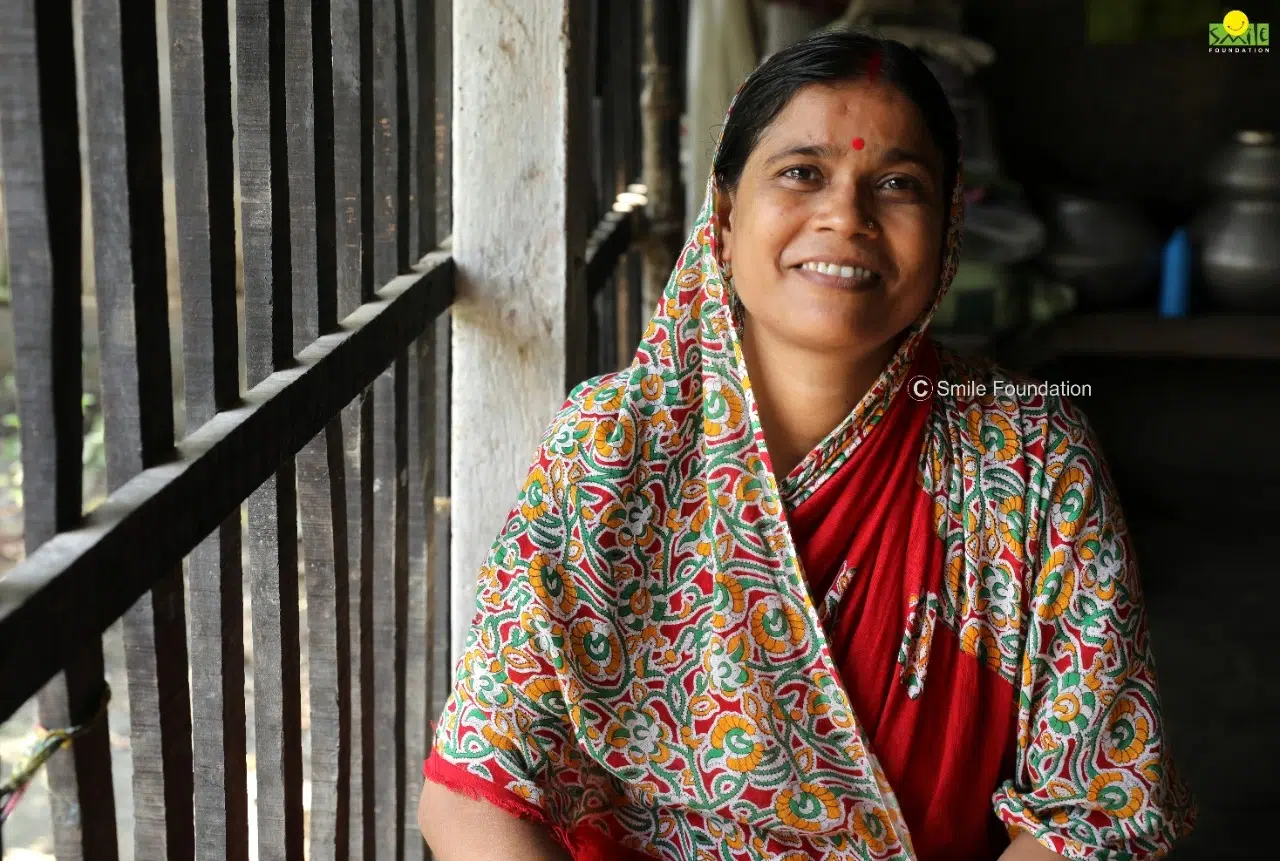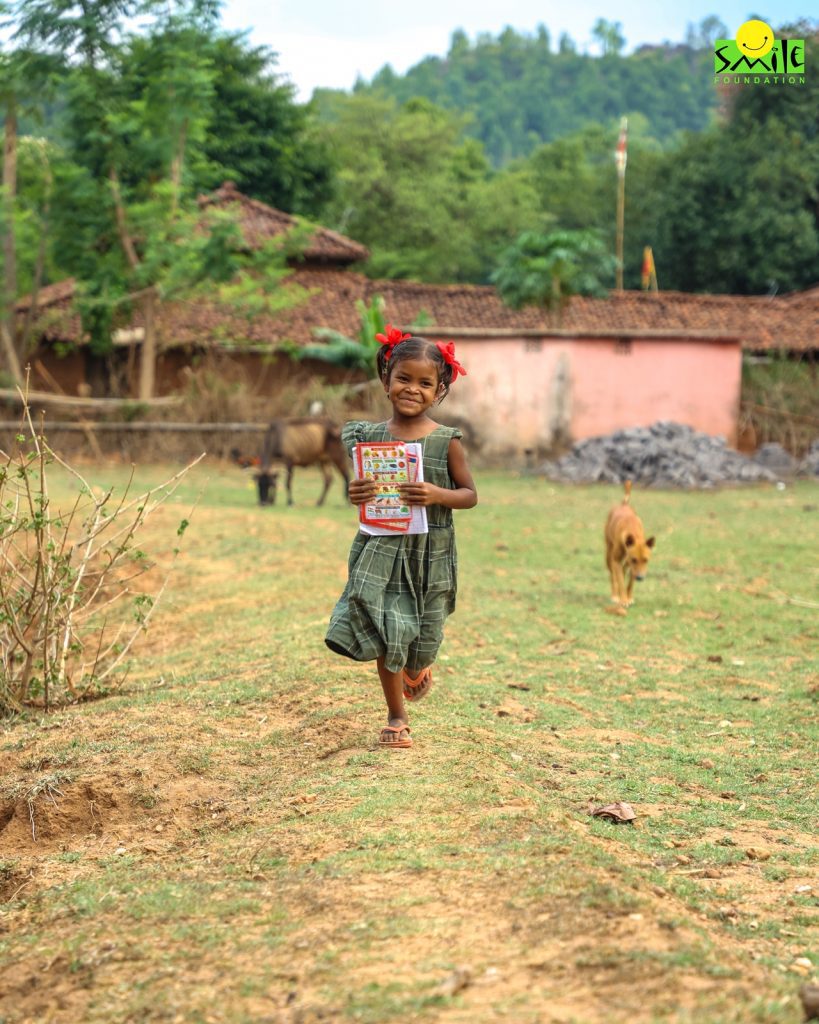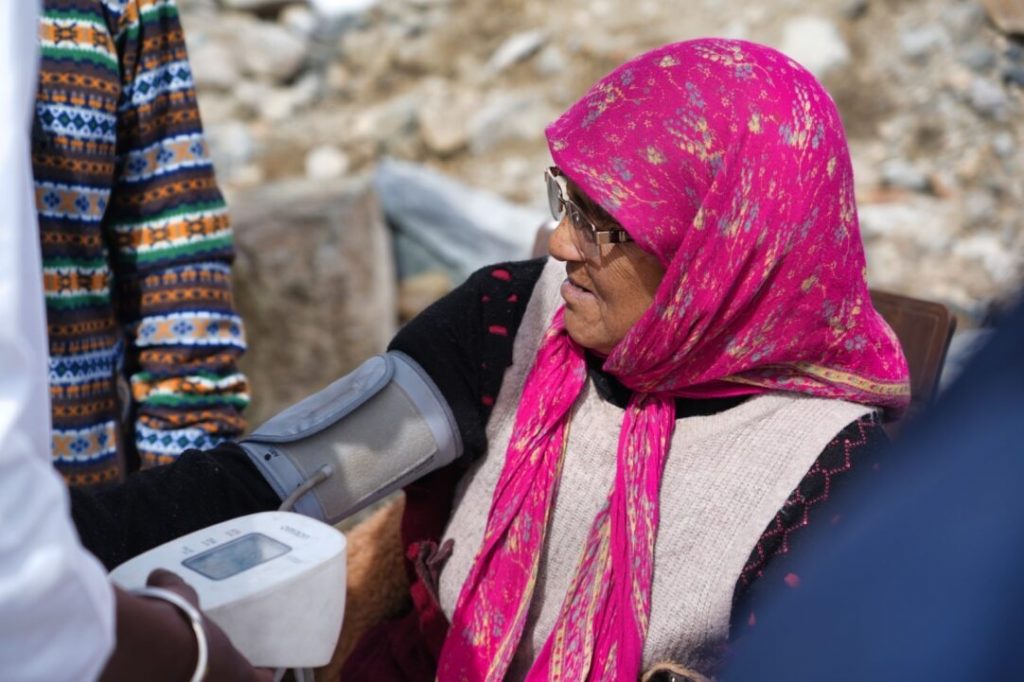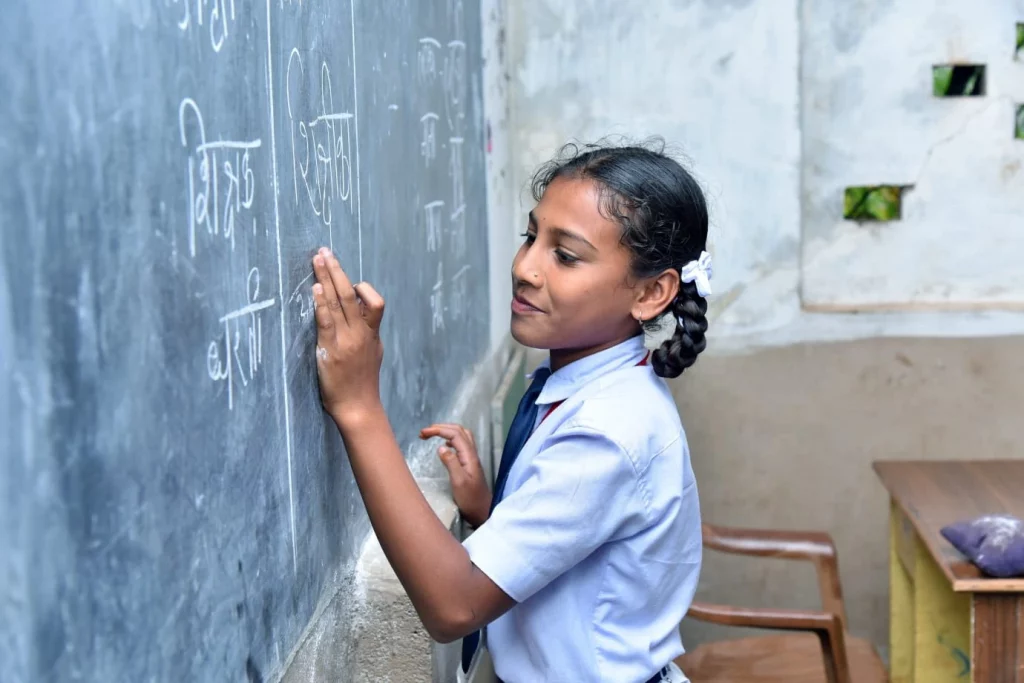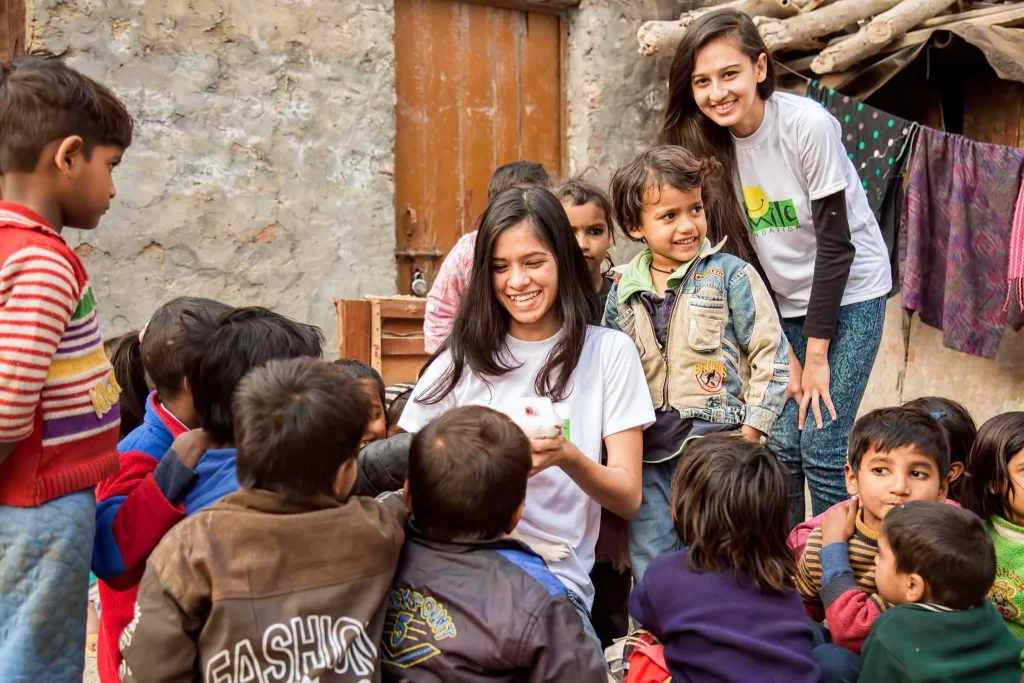Ushamma has been working in our household for more than five years as a cook. The 35-year-old, married at the age of 15 to her cousin, is the mother of three and a widow. After her alcoholic husband died a few years ago, she has been struggling to give a better life to her daughters.
“He used to beat me in his drunken rages and take all the money I earned. At least now I can save some money for my children’s future as I want them to study and work so they don’t suffer my fate,” she says.
Look around us and we will find many such Ushammas in our society. It’s the story of many women, especially from the lesser privileged sections of society. Deprived of access to education and hence livelihoods, forced into child marriages or marriage at a very young age, and subject to domestic violence, they live lives of quiet desperation.
It’s a woman’s life
Gender inequality and discrimination starts from the time of conception, with people preferring sons over daughters. And it’s a tough road ahead for women. “It starts from the time the child is in school. Girls have to be more conscious of their bodies and anatomical changes that come with puberty. If they mingle with boys, it’s an issue, if they study well, they are mocked, and if they don’t do well, they are called dumb,” says Sethulakshmi, MD, Sethu Foundation.
Whether it’s lack of access to education and proper healthcare, child marriage, domestic violence, workplace harassment or even climate change – it’s always girls and women who are disproportionately affected.
Lack of access to education
According to UNICEF, globally, 119 million girls are out of school, including 34 million of primary school age, 28 million of lower-secondary school age, and 58 million of upper-secondary school age.
Investing in girls’ education can transform communities, and countries as educated girls are less likely to marry young and more likely to lead healthy, productive lives.
However, in India, the education of girl children remains a critical issue as many families feel that educating a girl child is a “dead” investment as they will get married and leave the household.
“When a girl grows up, there is a debate as to whether she should pursue her studies or not,” says Sethulakshmi, adding that families that are trying to make ends meet don’t want to support dead investment as her earnings won’t come back to the family. “Very rarely, we see mothers fighting for their daughters. There are only a few women who don’t want their daughters to suffer the same fate but that’s a beginning and there is light at the end of the tunnel.”
The Indian government launched the Beti Padhao Beti Bachao (BBBP) initiative in 2015. It provides financial assistance for the education and health of the girl child, especially in districts with low child sex ratio.
Only about 60% of girls complete class 12, says John Roberts, director, southern region, CRY. “Whenever children are not in school, they become susceptible to early marriage, violence and abuse, and child labour. And girls are more vulnerable,” he says.
Child marriage
Child marriage is not legal. However, it still affects one out of every five girls in the world today (UNICEF 2020). Child marriage among girls is expected to be six times more likely to occur than among boys globally (UNICEF Press Release 2019) and has a direct impact on the wellbeing and the health of a girl as a child bride can become a teenage mother and complications during pregnancy are the leading cause of mortality among adolescent girls (UNFPA 2020).
Despite amended legislation setting 18 years as the legal minimum age for girls, India is home to a significant number of children, particularly girls, getting married.
In India, as per Census 2011, there are 12.15 million married children in India of which 8.9 million are girls. The National Family Health Survey (NFHS)-V, (2019-21) India Fact Sheet indicates a decrease in the prevalence of child marriage, decreasing from 26.8% in 2015-16 to 23.3% in 2019-21, yet there are significant interstate and intrastate variations. Earlier, NFHS-IV (2015-16) stated that more than half (52%) of married adolescent girls reported becoming mothers at an early age.
Survivors of harassment and violence
Despite ongoing efforts to the issue of domestic violence through laws like the Protection of Women from Domestic Violence Act (2005), awareness campaigns, and support systems, a large number of women are subject to verbal, physical, emotional and sexual violence in their own homes, and many tortured and killed for dowry.
According to the National Family Health Survey (NFHS-5), one in three women (approximately 33%) in India report experiencing physical, sexual, or emotional violence at some point in their lives. Twenty seven percent of married women aged 15-49 reported having ever experienced physical violence by their spouse. In rural areas, the prevalence of domestic violence tends to be higher, with 31.6% of women reporting some form of violence, compared to 24.5% in urban areas.
“Boys grow up seeing certain norms at home and take it for granted. They think it is expected of them. Very rarely there are change agents, usually parents, who ask them to be respectful to women and break gender norms, saying anyone can cook or do household chores,” says Sethulakshmi, adding that if this kind of education is not given, the boy will grow up to be a man who cannot cope with a challenging, empowered woman.
“So, he makes her feel vulnerable, makes her non-empowered by not letting her work and cutting her earning power, cutting out her family members and friends, controlling what she wears and her behaviour, and with it comes domestic violence,” she adds.
At the workplace too women face harassment – be it male colleagues putting them down at work or sexual harassment. There are laws in place, such as The Sexual Harassment of Women at Workplace (Prevention, Prohibition, and Redressal) Act (POSH Act), 2013. Sections 354 and 509 of the IPC address offenses related to sexual harassment. However, fear of retaliation, lack of awareness and poor implementation makes it still a burning issue.
How does climate change impact women?
According to the WHO document, Protecting Maternal, Newborn and Child Health from the Impacts of Climate Change, the effects of climate change on women’s health are still under-reported and underestimated.
A UN Women report launched at COP28 suggests that by 2050 climate change may push up to 158 million more women and girls into poverty, and cause 232 million to face food insecurity. Worldwide, thousands of people are forced to leave their homes due to extreme weather conditions such as storms, floods or heat. According to the UN Environment, 80% of the people displaced by climate change are women or girls facing heightened risks of poverty, violence or unintended pregnancies as they migrate to safer locations.
An International Food Policy Research Institute study reveals that climate change is projected to reduce agricultural yields in India by 18.6% for wheat and 10.8% for rice by 2050. This will impact women as they account for over 60% of agricultural workers in India and are responsible for up to 90% of the post-harvest work.
Data from the Internal Displacement Monitoring Centre also reveals that India had the highest number of people displaced by climate-related disasters in 2019, with over 5 million people affected. Women and girls are particularly vulnerable to the negative effects of migration, including trafficking and exploitation.
What is being done?
The government, legal system, and law enforcement agencies are working to address these issues. But while laws exist, enforcing it and preventing such incidents on the ground remains a challenge.
There are numerous nonprofits working in the field to achieve gender equality and make the world a safer place for women and children.
“We think issues such as domestic violence exist only among low-income groups but it’s just more visible. Women from all strata of society experience domestic violence,” says Sethulakshmi, whose organisation has been working to empower less privileged women.
“We help them open a bank account in their names so that they can be economically empowered. We want to teach them zero debt attitude, self-care, persuasive skills to maintain peace at home, importance of mental health, enough sleep and the need to remain physically fit,” she says.
In the field of education, Smile Foundation’s Project Manzil, in collaboration with IPE Global, aims to provide counselling and employability skills training to over 90,000 young girls in Rajasthan. The project provides training to girls in streams like IT, healthcare, beauty and wellness, security, retail, automobile, apparel, home furnishing, agriculture, tourism and hospitality, and electrical and electronics.
Overall, the project aims to empower adolescent girls to realize their career goals and educational aspirations by improving the quality of vocational education with a 3-pronged approach focusing on schools, students and industry. It also seeks to retain girls in school and reduce drop-out rates. Currently, the project is benefitting over 44,000 girls in grade 9-12 from Government schools in 6 districts of Rajasthan.

